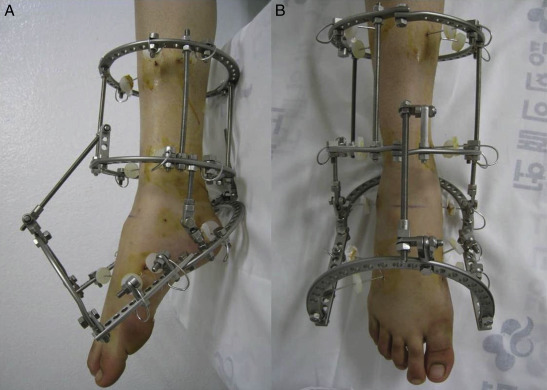
Poliomyelitis is an infection caused by a neurotrophic virus that targets the anterior horn cells of lower motor neurons resulting in a flaccid paralysis.
The long-term consequence of paralysis from poliomyelitis is deformity, the location and type depending on the muscles affected and imbalance between muscle groups. With skeletal growth, leg shortening, soft tissue contractures and foot deformities often develop in poliomyelitis . Treatment strategies require consideration of several factors, including the instability from muscle imbalance, the presence of knee and hip contractures or poor soft tissue conditions from previous surgery. The goal of orthopaedic surgical treatment is to obtain a painless plantigrade and stable lower limb. Conventional operative techniques include corrective osteotomies, arthrodeses, extensive release of contractures and tendon transfers.
Operative technique
Treatment for post-poliomyelitic deformities must be individualized owing to the diversity in type and severity. The treatment options for the foot and lower limb are the following :



